Why is Layer2 needed?
After the emergence of blockchain, whether it is the early Bitcoin network or the Ethereum network, at the beginning of the design, although the advantages of peer-to-peer payment systems or smart contracts allowed blockchain technology to develop rapidly, the speed on the chain The problems of slowness and miner gas fees are also more prominent, and this is the flaw of Layer 1.

In order to improve or even solve the problems existing in Layer 1, Layer 2 related technologies and projects came into being. In general, Layer2 is an independent blockchain network built on Layer1. Its purpose is to package most of Layer1's transactions into Layer2 to reduce pressure and expand capacity.
In the early days of blockchain development, decentralization, security and scalability formed an impossible triangle. Although this Blockchain Trilemma cannot be broken, the mutually reinforcing Layer1 and Layer2 also make decentralization, security and Reliability and scalability can be achieved at different layers of the same network.
The development path of Bitcoin Layer 2
First, let’s focus on why we should pay attention to Bitcoin Layer 2 again in 2024. At a time when Ethereum is issuing coins through smart contracts and DeFi is leading to a truly prosperous ecosystem, the Bitcoin ecosystem is slightly quiet. At this time, starting from 2023, with the rise of BRC20, Atomic, Runes and other protocols, popular market inscriptions such as ORDI and SATS have also been born, as well as well-known NFTs such as Bitfrog and Runestone.
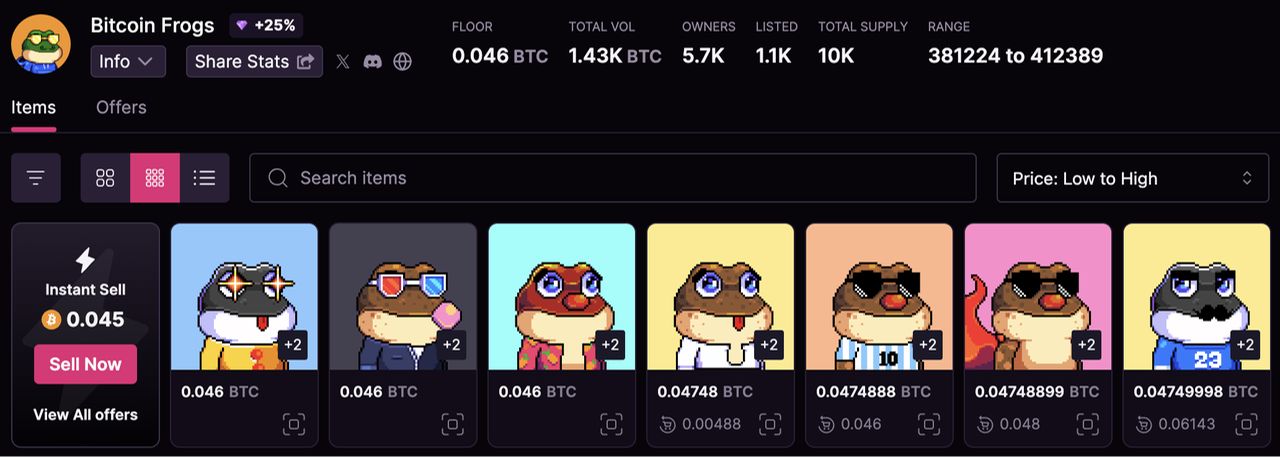
Behind every phenomenon-level token/NFT is a large-scale Gas War. After a period of development, there are indeed more and more assets on Bitcoin. Although BRC20 and the Ordinals protocol allow users and investors to see the huge potential and gameplay of the Bitcoin network, Bitcoin does not support smart contracts. The currency network cannot expand into more meaningful application scenarios just by relying on inscriptions or NFTs.
Then as developers, perhaps in 2023 and 2024, there will be a more urgent mentality to build Layer 2 infrastructure and networks belonging to the Bitcoin network. As the saying goes: "It's never too late to eat well." The construction of Bitcoin Layer 2 has already begun. The following will sort out its development path.
In December 2015, Bitcoin Core developer and Ciphrecx CTO Eric Lombrozo, Bitcoin technology enthusiast Johnson Lau, and BlockStream co-founder Pieter Wuille jointly proposed a Bitcoin expansion and improvement proposal - SegWit, or BIP141. The upgrade was implemented in 2017 and was introduced as a soft fork of the Bitcoin network. One of the most significant advantages brought by the SegWit upgrade is the increased block capacity.
In January 2018, Bitcoin Core developer Greg Maxwell released the Taproot proposal. Taproot is a major upgrade since SegWit and is designed to improve privacy, simplify transaction verification and increase efficiency, and handle more complex smart contracts.
It is precisely with these two extremely important updates that Bitcoin Layer 2 has the foundation for development. The mainstream solutions are mainly divided into State Channels, Sidechains, Rollup, PoS expansion, etc.
List of cutting-edge Bitcoin Layer2 projects
Merlin Chain
Merlin Chain is a Bitcoin layer 2 solution developed by the team behind Bitmap Tech (formerly Recursiverse). Merlin Chain is focused on leveraging Bitcoin’s unique properties and aims to unlock its untapped potential. Technically speaking, Merlin Chain integrates zero-knowledge proofs, decentralized oracles and on-chain BTC fraud prevention modules to support Bitcoin native assets, users and protocols.
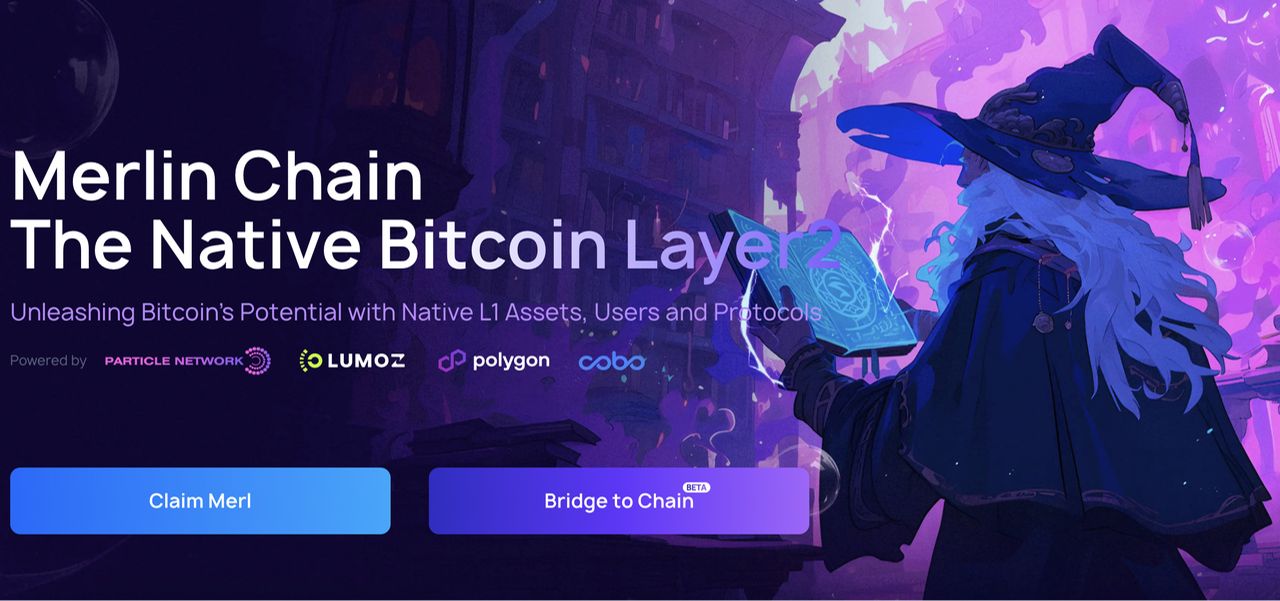
At the same time, the introduction of $MERL tokens provides a mechanism for Merlin Chain through which community members can directly participate in the governance and development of the network, and also provides an economic incentive to promote the participation of users and developers.
However, recently, after Merlin Chain released its tokens, it opened the BTC unstaking function, but the operation came too late, resulting in heavy losses for some users. In addition, the number of active users of the Merlin ecological project has been halved, the community has been hacked, user confidence has been frustrated, and Chain's TVL has dropped to US$2.4 billion.
Official website: https://merlinchain.io/
B² Network
B ² Network is a leading Layer 2 project on BTC and an EVM-compatible ZK Rollup. Rollup data and ZK proof verification commitments are recorded on the BTC network and ultimately confirmed through the challenge response mechanism. The project adopts a modular design architecture, including the Rollup layer and the data availability (DA) layer, namely B² Hub. Cleverly, using zk rollup to significantly reduce transaction fees, and combining it with a method similar to fraud proof, allows zk commitment proof to accept user challenges, thus solving the limitation of BTC layer being unable to be contract verified.
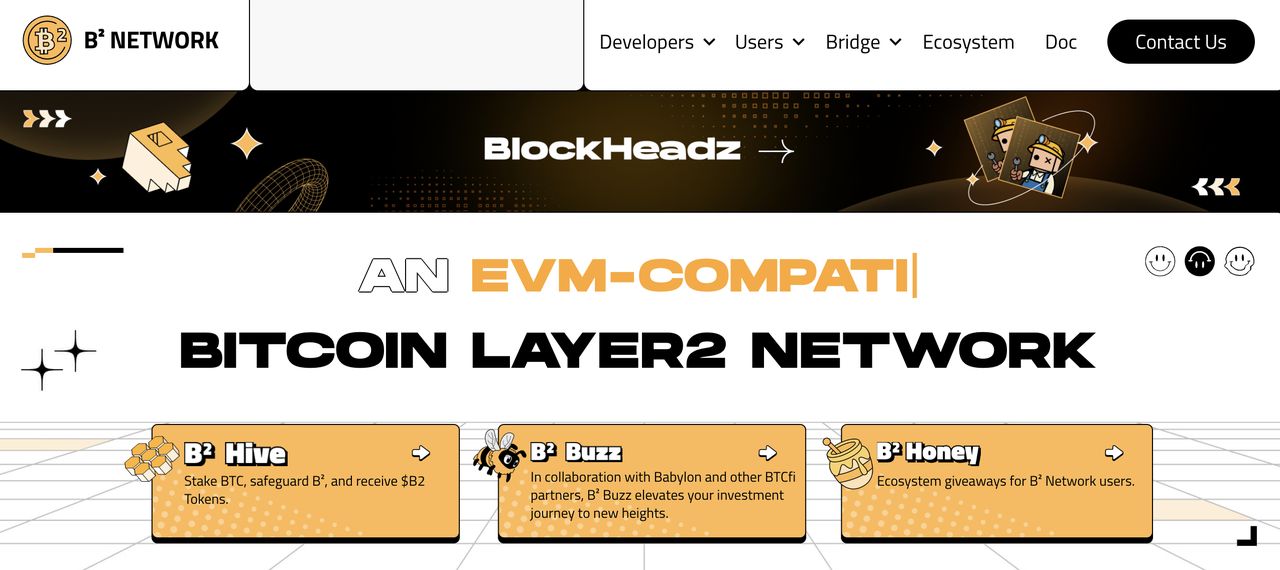
It ensures security through Babylon's staking and timestamping protocols, effectively preventing remote attacks. It was also recently announced that it is cooperating with Polygon Labs to create the first BTC use case integrating Polygon CDK, which means that in the future, developers can choose the "Polygon CDK + B² Hub" combination to initiate their own BTC rollup.
Official website: https://www.bsquared.network/
AILayer
AILayer is the first L2 project to add the AI concept to the Bitcoin Layer. It is officially defined as a Bitcoin second-layer network that uses Web 3.0 + AI applications and supports the Rune protocol. It is also the only project in the AI narrative to develop BTC Layer2. Under the aura of AI blessing, AILayer is also the first BTC Layer 2 to support innovative assets such as inscriptions and runes at the Bitcoin Layer 2 level. The pledged funds can be pledged and withdrawn at any time, making it more flexible and user-friendly. The latest official website data shows that the number of on-chain users on the mainnet is close to one million, and the TVL exceeds 700 million US dollars.
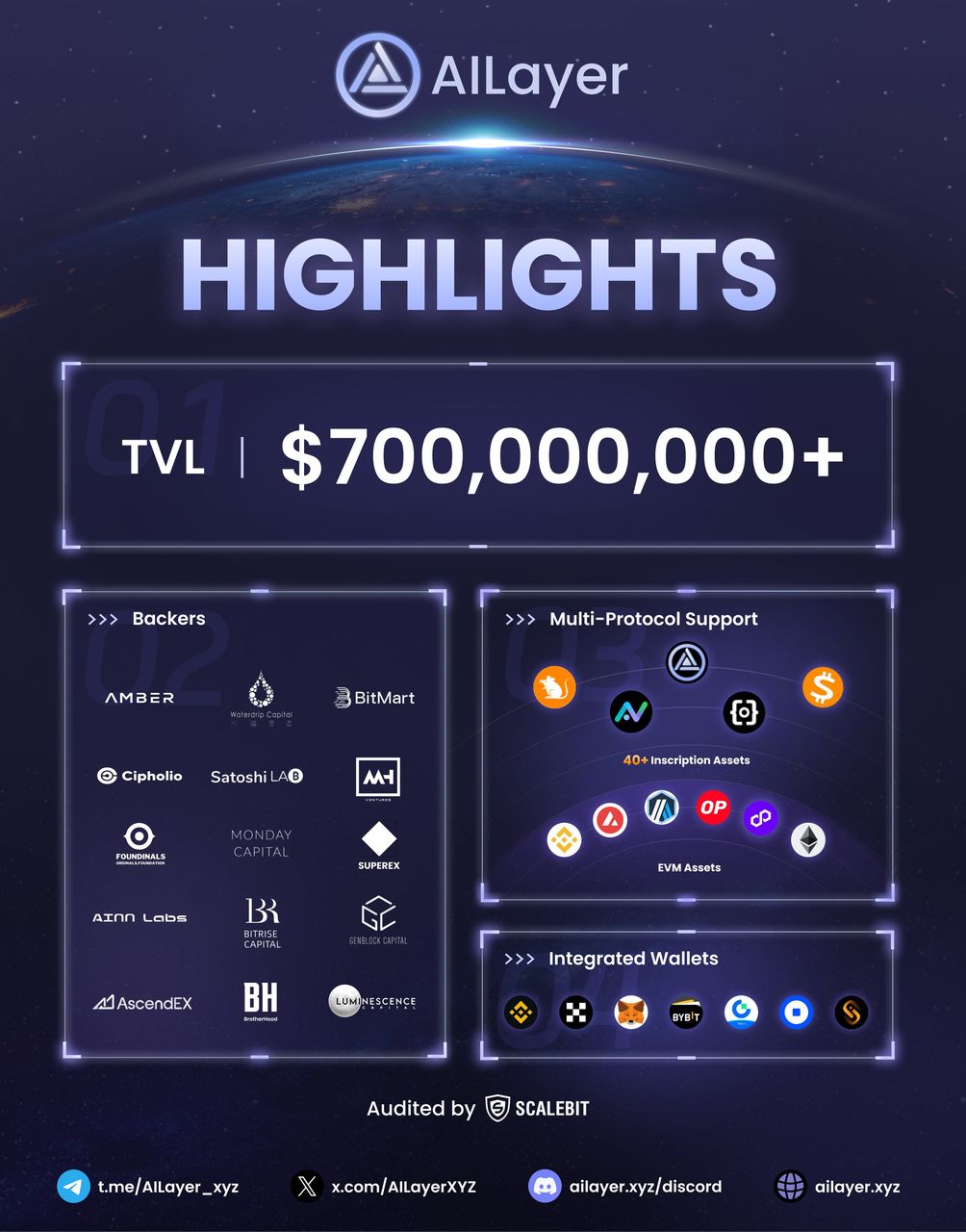
Among them, tokens pledged to AILayer can become PoS verification nodes. Many PoS verification nodes will be responsible for maintaining the stable operation of the second-layer network and normal block production, thereby obtaining continuous block production rewards. At the same time, in terms of AI, AILayer provides a decentralized artificial intelligence infrastructure, providing developers and enterprises with the technology, tools and resources to build and deploy decentralized AI applications.
In terms of strategic cooperation, AILayer signed a strategic cooperation agreement with the Ministry of Digital Development of Kyrgyzstan, becoming the third Web 3.0 project in the world to sign a contract with a Central Asian national government after Binance and Tether.
In terms of ecosystem development, more than 100 ecological applications and developers have joined AILayer. The AI Odyssey event that will be launched on the mainnet and the developer incentive plan dedicated to ecological construction will also be launched soon.
Recently, AILayer and BitFi announced the launch of the first joint airdrop event. Participants will have the opportunity to obtain an exclusive BitFi OG pass and enjoy multiple exclusive incentives such as BitFi airdrops and AILayer TVL points. In addition, AILayer is now connected to the OKX Web3 wallet. Users can stake, earn points, and more on AILayer through the OKX Web3 wallet.
Official website: https://AILayer.xyz/
Bitlayer
Bitlayer is the first Bitcoin security-equivalent and Turing-complete Bitcoin Layer 2 built based on the BitVM paradigm. It aims to bring secure scalability to the Bitcoin ecosystem, promote asset diversity and stimulate innovation to provide better Fast, safer, and more flexible user experience.
Compared with other Bitcoin Layer 2 projects, Bitlayer's main technical innovation is to use the latest BitVM computing paradigm and OP-DLC bridge to build a dual-channel two-way locked asset bridge, thereby achieving security equal to the first layer of Bitcoin.
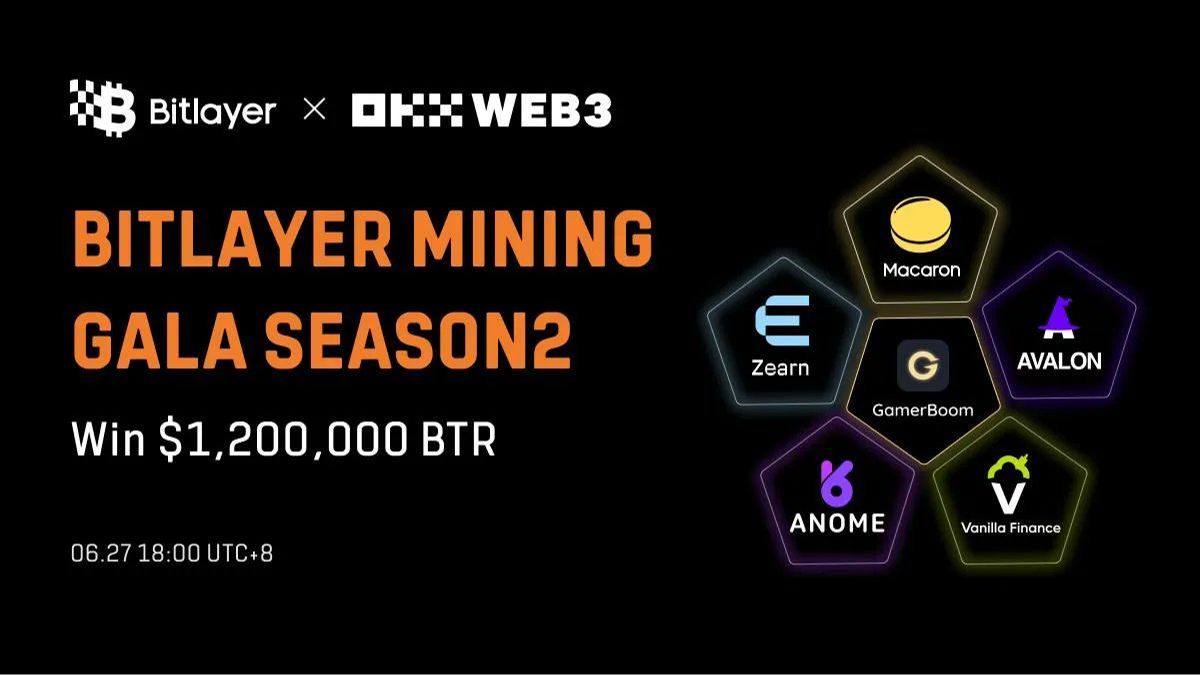
The latest data from the official website shows that the current total lock-up volume (TVL) on the Bitlayer chain has exceeded 500 million US dollars. Nearly a hundred ecological projects have been deployed to Bitlayer, and the number of active transactions on its chain has exceeded 1 million, becoming an ecological growth factor. The fastest Bitcoin Layer 2. In terms of market operation activities, Bitlayer held two phases of the Top Mining Festival, providing users with multiple project token airdrop rewards and more opportunities to obtain generous rewards.
Official website: https://www.bitlayer.org/
BEVM
BEVM is a fully decentralized BTC Layer2 project that uses BTC as GAS and is compatible with EVM. Its core goal is to expand the smart contract scenario of Bitcoin and allow BTC to break through the non-Turing completeness of the Bitcoin blockchain and do not support smart contracts. The constraints allow BTC to build decentralized applications with BTC as the native GAS on Layer 2 of BEVM.
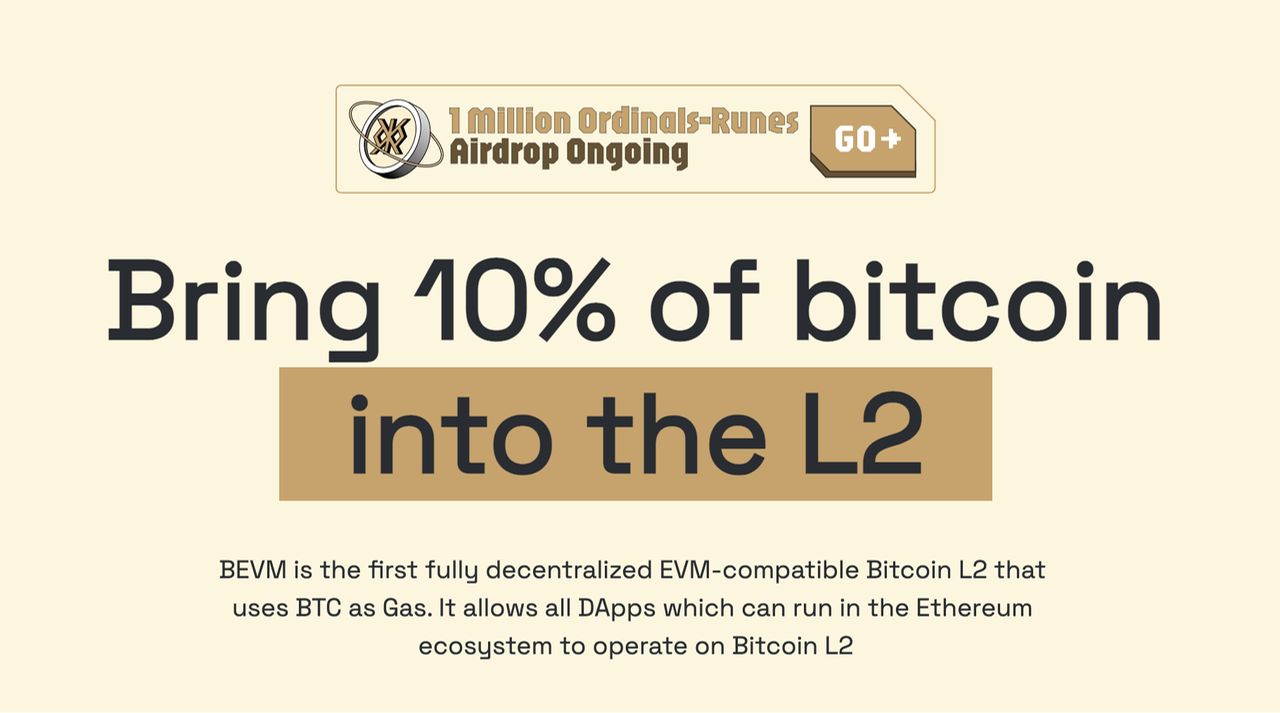
Based on the Schnorr signature and Mast contract brought by Taproot upgrade, decentralized BTC cross-chain is implemented with 1000+ Bitcoin light nodes, allowing BTC to freely circulate between L1 and L2 without trust. At the same time, the BEVM network uses BTC as the GAS, and compatible with EVM.
Recently, in order to better connect the Ethereum and Bitcoin ecosystems, the BEVM team is building a relay chain based on OPtimism's OP Stack that uses WBTC as GAS and is compatible with OP-Rollup. This relay chain will serve as a completely decentralized A specialized middle layer that introduces mainstream assets on Ethereum (WBTC/ETH/USDC/USDT, etc.) into the BEVM network.
Official website: https://www.bevm.io/
write at the end
It can be seen from the projects represented above that Bitcoin Layer 2 does not appear to be homogeneous. Although most of them adopt relatively mature Layer 2 technologies such as EVM, Rollup, and cross-chain, the focus of the projects is different. For example, BEVM focuses on Cross-chain experience and Merlin Chain have created a new paradigm of staking, while AILayer has encountered and seized the AI trend, deeply integrated with artificial intelligence, and brought more AI application solutions.
The original intention of Bitcoin Layer 2 was to indirectly break the Triangle of Impossibility. However, as various events catalyzed it and the times changed, it was given more meaning and attracted more attention from other public chains to jointly build it. Bitcoin’s prosperous ecosystem. Will Bitcoin Layer 2 have a hot summer like Ethereum Layer 2? Maybe it's just a matter of time, and a fuse is still needed to detonate it.








